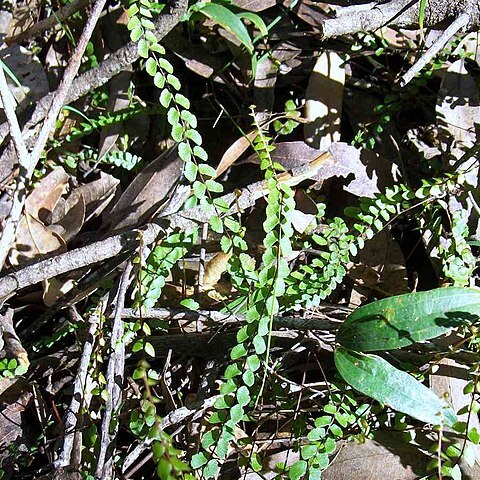Small to medium-sized, terrestrial, epilithic, scandent, or epiphytic ferns with a Lindsaeoid protostele, the xylem with an internal phloem Strand, or in some small epiphytes open. Scales variable in shape, mostly entire. Lamina rarely simple, mostly once or twice pinnate, sometimes more dissected, to decompound, anadromous; ultimate divisions various, most often dimidiate, sometimes partly or entirely equal-sided, rarely cuneate and dichotomously divaricate. Veins free, connivent, or anastomosing without free included veinlets. Sori terminal on the veins, bi-to plurinerval, less often uninerval, mostly very close to the margin. Indusium short, roundish, ovate, or hippocrepiform and then free at the sides, or more elongate, and laterally free or adnate, rarely fugacious. Bicellular filiform paraphyses present in some, probably in all species. Spores trilete or (very rarely in the Old World species) monolete.
Sori mostly near upper and outer margin, often united into coenosori and served by 2 or more veinlets. Indusium delicate, broad, attached along base. Sporangia ∞, with slender stalks; annulus straight; spores tetrahedral. Sporangia further protected by modified tooth of lamina. Some 75 spp. (or many more according to limits adopted for genera), mainly tropical in both hemispheres, extending south to Tasmania and N.Z. Rhizome well-developed or short; paleae often hardly distinguishable from hairs. Spelling altered to Lindsaya by Kaulfuss Enum. Fil. 1824, 218.
Rhizome scales coarse, narrow with fine tips. Fronds monomorphic or dimorphic. Stipe not articulated to rhizome. Lamina mostly 1–2-pinnate, rarely simple (not in Australia) or 3-pinnate-pinnatifid. Pinnules flabellate, cuneate, deltoid, or variously ovate or lanceolate. Indusium short and orbicular to ovate or elongate.

